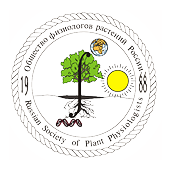Новости науки и практики // Апрель 2024

Corn reduces arsenic toxicity in soil
When crops grow in arsenic-contaminated soil, this toxic element accumulates in the food chain. A study involving the University of Basel has now discovered a mechanism used by corn plants to reduce arsenic uptake: the key factor is a special substance released into the soil by the roots.
https://www.eurekalert.org/news-releases/1039807
Cacao plants' defense against toxic cadmium unveiled
Scientists found that part of the cadmium is stored in calcium oxalate crystals in roots and branches of the cacao plant, which was unexpected”, explains Blommaert. In particular, the crystals were most abundant in the branches. Interestingly, whilst crystals were present in the leaves, they did not seem to help in detoxifying cadmium in this part of the plant. “We believe that the calcium oxalate crystals are a mechanism of detoxification of the plant against the metal”, she adds. In addition, they also discovered that cadmium combines with sulphur in certain cells in the roots. This mechanism is well known in roots of cereals, where cadmium is retained in the vacuoles and bound to thiol-containing molecules. In the case of cacao, this mechanism is less pronounced, and more cadmium is transferred to aerial parts.
https://www.eurekalert.org/news-releases/1038082
Winners and losers’ as global warming forces plants uphill
Some plant species will “win” and others will “lose” as global warming forces them to move uphill, new research shows.
https://www.eurekalert.org/news-releases/1038401
Marine algae implants could boost crop yields
Discovery could lead to more sustainable food supply. Scientists have discovered the gene that enables marine algae to make a unique type of chlorophyll. They successfully implanted this gene in a land plant, paving the way for better crop yields on less land.
https://www.sciencedaily.com/releases/2024/03/240306150702.htm
New route to recyclable polymers from plants
Cellulose, abundantly available from plant biomass, can be converted into molecules used to make a new class of recyclable polymers, to sustainably replace some plastics.
https://www.eurekalert.org/news-releases/1038524
Researchers solve mystery of how minimalist plant immune molecules become activated
A new study published in the journal Nature shows that the same phenomenon that occurs when we try to mix oil and water – phase separation – plays an important role in the immune system of plants.
https://www.eurekalert.org/news-releases/1037659
Microalgae with unusual cell biology
A unicellular organism found in algal blooms has a distinctive photosynthetic machinery. A globally distributed single-celled organism that occurs in harmful algal blooms has been found to exhibit an unusual organisation of photosynthesis. Researchers have taken a closer look at the unusual cell biology of the species Prorocentrum cordatum from the group of dinoflagellates.
https://www.sciencedaily.com/releases/2024/03/240305134223.htm
Эволюция рибозимов, размножаемых рибозимами: еще один шаг к воссозданию РНК-жизни в пробирке
Одним из важнейших этапов развития РНК-жизни было появление рибозимов-полимераз (молекул РНК, размножающих молекулы РНК), достаточно точных, чтобы полезная наследственная информация не терялась, а накапливалась в ряду поколений. До сих пор экспериментаторам не удавалось получить столь точные рибозимы-полимеразы. Американским ученым удалось это сделать при помощи нового метода искусственной эволюции.
Ученые выяснили, почему черника синяя
В исследовании, опубликованном в журнале Science Advances, исследователи показывают, почему черника имеет синий цвет, несмотря на темно-красный цвет пигментов в кожуре плода. Вместо этого их синий цвет обеспечивается слоем воска, который окружает плод и состоит из миниатюрных структур, рассеивающих синий и ультрафиолетовый свет.
https://www.sciencetoday.ru/bio-sciences/flora/uchenye-vyyasnili-pochemu-chernika-sinyaya
https://www.science.org/doi/10.1126/sciadv.adk4219
Study shows how plants adapt to cold ambient temperatures and frost
Scientists used the model plant thale cress (Arabidopsis thaliana) in her research work to decode which cellular mechanisms plants use to adapt to cold temperatures and frost. The results of the study have been published in The Plant Cell.
https://phys.org/news/2024-02-cold-ambient-temperatures-frost.html
A century of studying plant secondary metabolism—From “what?” to “where, how, and why?”
A hundred years ago, scientists were trying to understand the fundamental question, “What makes a plant?” Since then, we have learned a great deal about the chemical constituents of plants and their functions. But, there is still much exploration needed to answer this question; tens of thousands of plant chemicals (known as secondary metabolites, phytochemicals, or natural products) remain to be identified, and many mys-teries remain even in some of the most well-studied organisms and pathways.
https://academic.oup.com/plphys/advance-article/doi/10.1093/plphys/kiad596/7499152?searchresult=1
Green leaf volatile sensory calcium transduction in Arabidopsis
Scientists identify two green leaf volatiles of Arabidopsis which trigger the expression of biotic and abiotic stress-responsive genes in a Ca2+-dependent manner.
https://www.nature.com/articles/s41467-023-41589-9
Regulation of carotenoid metabolism in Zinnia elegans by carotenoid cleavage dioxygenase
Zinnia elegans is an annual herbaceous ornamental flower widely cultivated in domestic and foreign gardens due to its diversity in flower types, color, and landscaping versatility. The Petal color of Zinnia elegans ranges widely from red to orange and yellow due to the different content of carotenoids and anthocyanins.
https://phys.org/news/2024-04-carotenoid-metabolism-zinnia-elegans-cleavage.html
Новости
Новости науки и практики // Июль 2024
Обзор научных новостей, опубликованных во всемирной паутине за последний месяцНовости науки и практики // Июнь 2024
Обзор научных новостей, опубликованных во всемирной паутине за последний месяцНовости науки и практики // Май 2024
Обзор научных новостей, опубликованных во всемирной паутине за последний месяц


Объявления
Записей не найдено.



